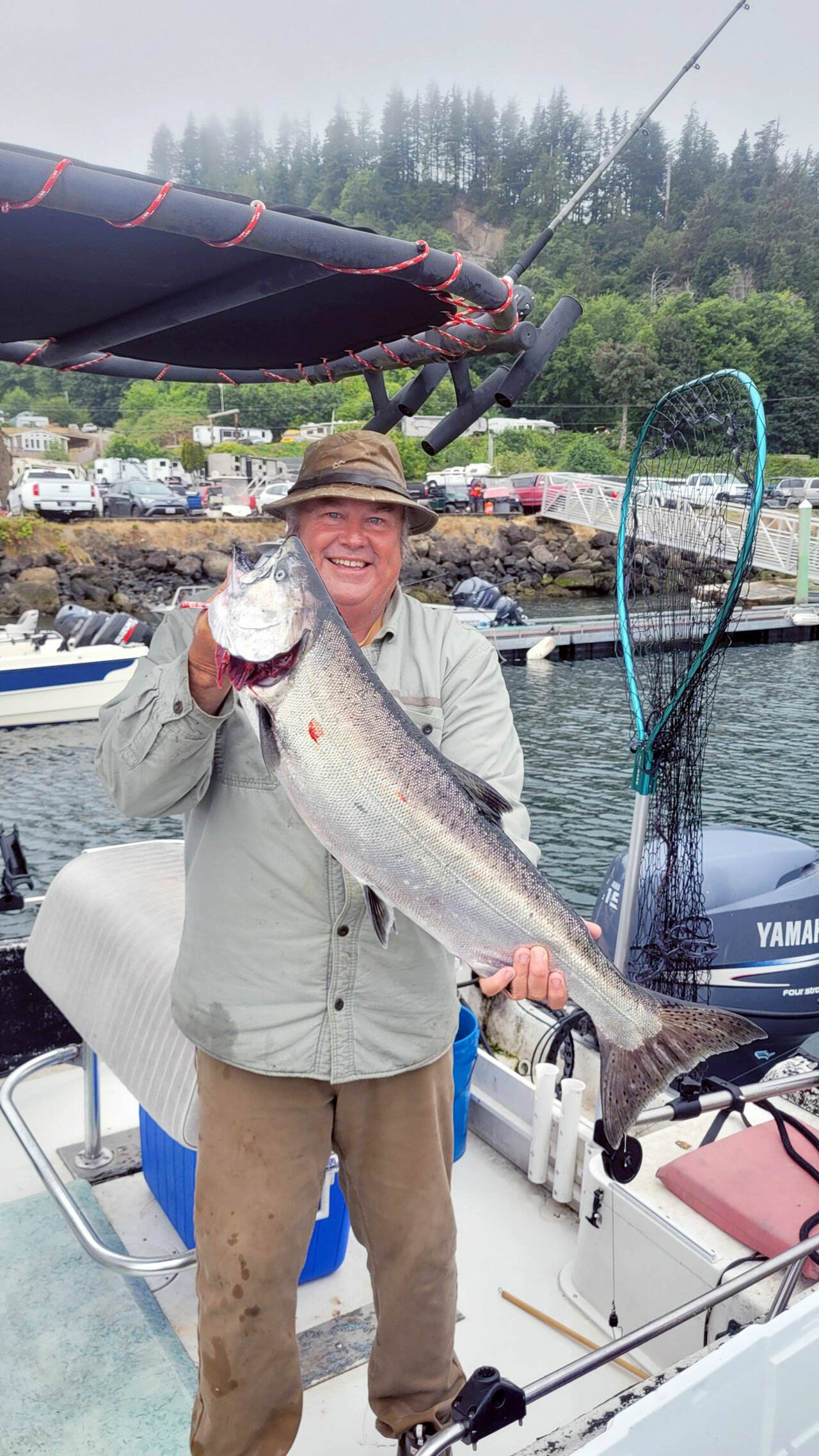ANGLERS WENT AND caught all the chinook while I vacationed in my living room playing countless hours of the first college football video game released in 11 years.
Hatchery chinook retention is now closed off Sekiu (Marine Area 5) after catch estimates through Sunday showed 95-percent (6,235 of 6,539) of the total legal-size chinook “encounters” agreed to in the year’s List of Agreed Fisheries had been achieved.
Anglers must now focus their attention on hatchery coho — with no minimum size and a daily limit of two — while releasing all kings, chum, sockeye and wild coho.
The hatchery coho fishery extends through Sept. 26 and then a non-selective silver fishery for clipped and unclipped adipose-fin coho is planned Sept. 27 through Oct. 15.
Best opener in a decade
Anglers dropping their downrigger lines at Midchannel Bank off Port Townsend and throughout Marine Area 9 had the most opening day success in any of the past 10 years in sampling results compiled by Fish and Wildlife fish checkers.
The state Department of Fish and Wildlife reports 3,049 of the 3,900 hatchery chinook available were caught in Marine Area 9 week’s three-day opener.
A little under 400 chinook were sampled in Area 9 on opening day, about 50 more than were landed in 2017 and 75 more than in 2018, the previous high totals since 2014.
This summer saw the king opener aligned on Areas 7, 9, 10 and 11, which stretch from the Canadian border south to the Tacoma Narrows Bridges, in an effort “to spread out angling pressure.”
The move forced anglers to decide on fishing one marine area, or bordering ones, instead of spending early July in the San Juans, midmonth in Area 9 and late July in Central and South Sound. Instead, anglers rushed to Marine Area 9 and paid sparse attention to Seattle and Tacoma with about 30-percent of the Area 10 quota landed and about 10-percent off Tacoma.
“We are consulting with our advisors to consider the situation for Marine Areas 7 and 9,” Fish Program Director Kelly Cunningham said last week. “With the record Chinook catch in Marine Area 9, we need to carefully explore the possibilities while staying within the available salmon harvest quota and/or encounter limits. We plan on making this decision later this week.”
No decision for Area 9 was handed down, so as the clock turns to August, so does the fishery.
Marine Area 9 is now open through Sept. 23 for hatchery coho with no minimum size restriction and a daily limit of two salmon.
Anglers must release all kings, chum and wild coho.
A nonselective coho fishery will wrap the season Sept. 24-30.
Earlier this month, retired tackle maker and former fisheries biologist Ward Norden checked in with an observation.
“I have been telling my customers that this past spring and since summer started, waters off the Washington coast and in the Strait of Juan de Fuca have seen the best growing conditions for plankton I have observed in several years,” Norden said. “This means the 2025 runs of coho and pinks will have excellent survival for next year’s returns. This year’s coho might be a bit bigger in average size, too.”
Beach casters should stock up early with their Rotator Jigs.
Hood Canal opens
Anglers looking to fish on the northern stretch of Hood Canal above Ayock Point can target all species of salmon minus chinook and chum now through Oct. 15.
The daily limit is four fish and there is no minimum size.
Take heed of the Tarboo Bay fishing rules which allow for only one single-point barbless hook. And avoid fishing near the mouth or in channels created by exposed tidelands near the Dosewallips, Duckabush or Hamma Hamma rivers.
Hunter’s ed courses
With hunting season on tap, Fish and Wildlife is offering fully in-person hunter education courses as well as hybrid courses that combine online and in-person learning. The in-person course, consisting of roughly 15 hours of instruction, is taught over multiple days and includes a field portion.
The hybrid course combines successful completion of an online portion followed by a four- to six-hour field skills evaluation where students receive hands-on training and evaluation by certified instructors.
Per Washington state law, all hunters born after Jan. 1, 1972 must complete a hunter education course in order to buy a hunting license. A once-in-a-lifetime hunter education deferral is available for prospective hunters 10 and older who want to try hunting with an eligible licensed hunter before completing a hunter education course themselves.
To learn about hunter education and find an upcoming course, visit https://tinyurl.com/PDN-HuntersEd24.
________
Sports reporter/columnist Michael Carman can be contacted at sports@peninsuladailynews.com.

